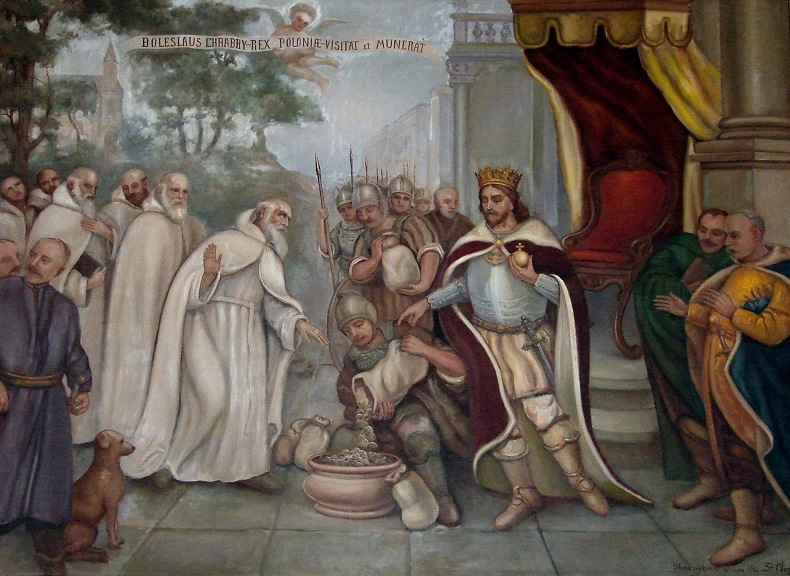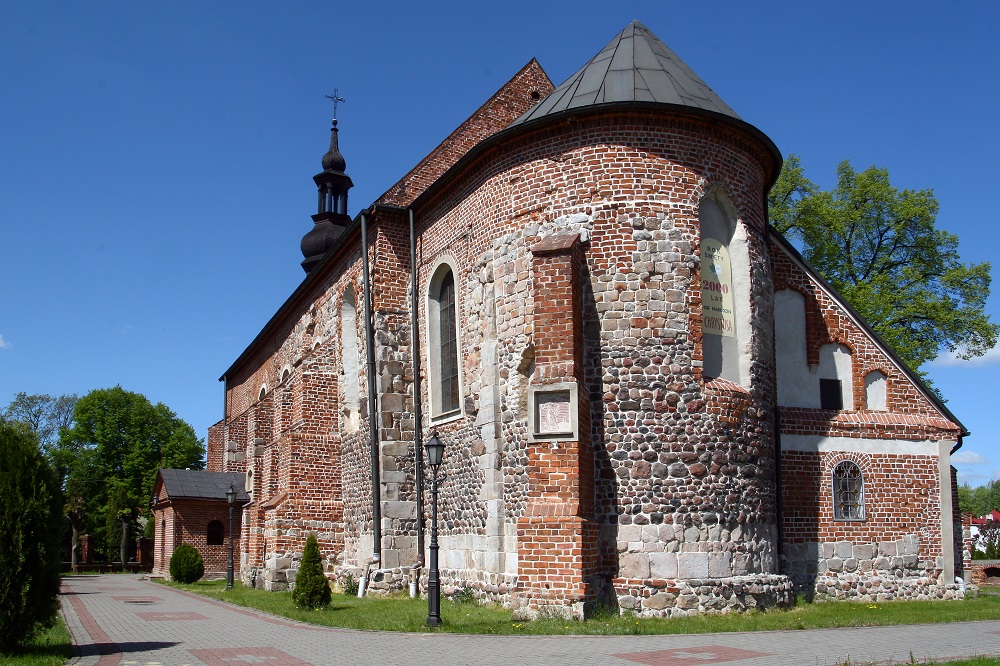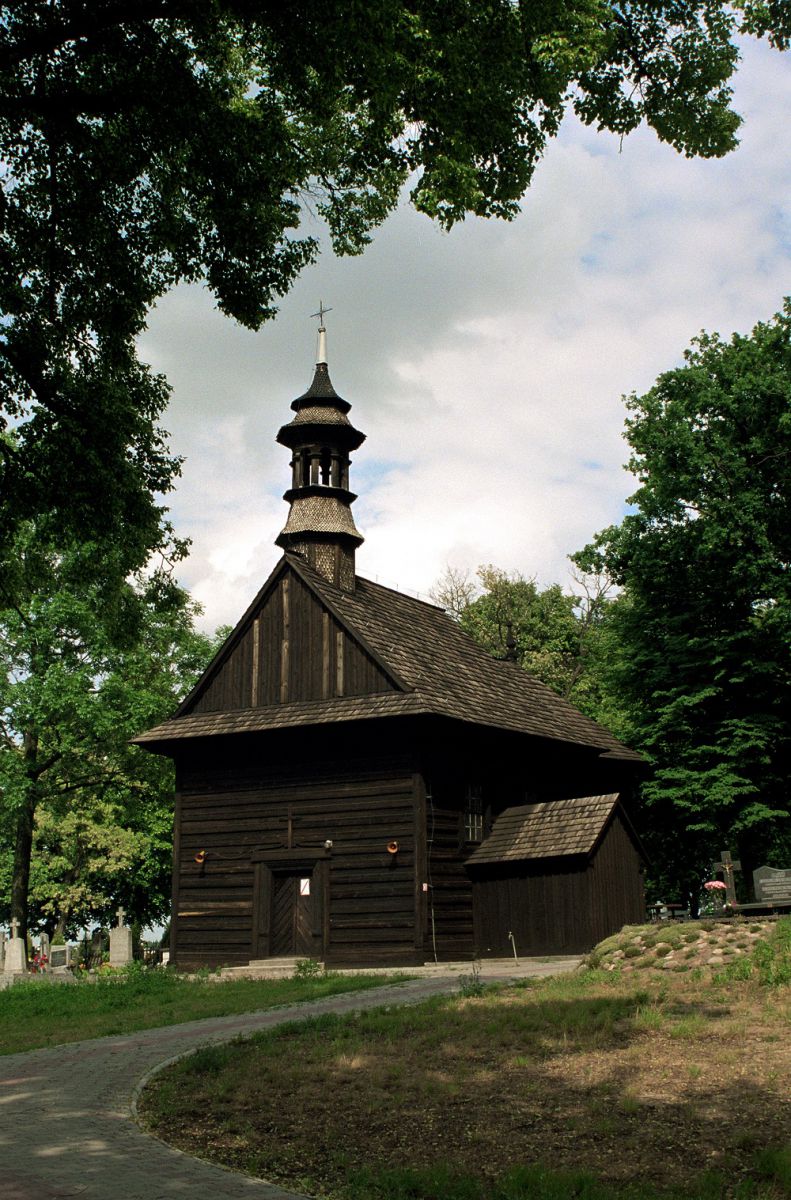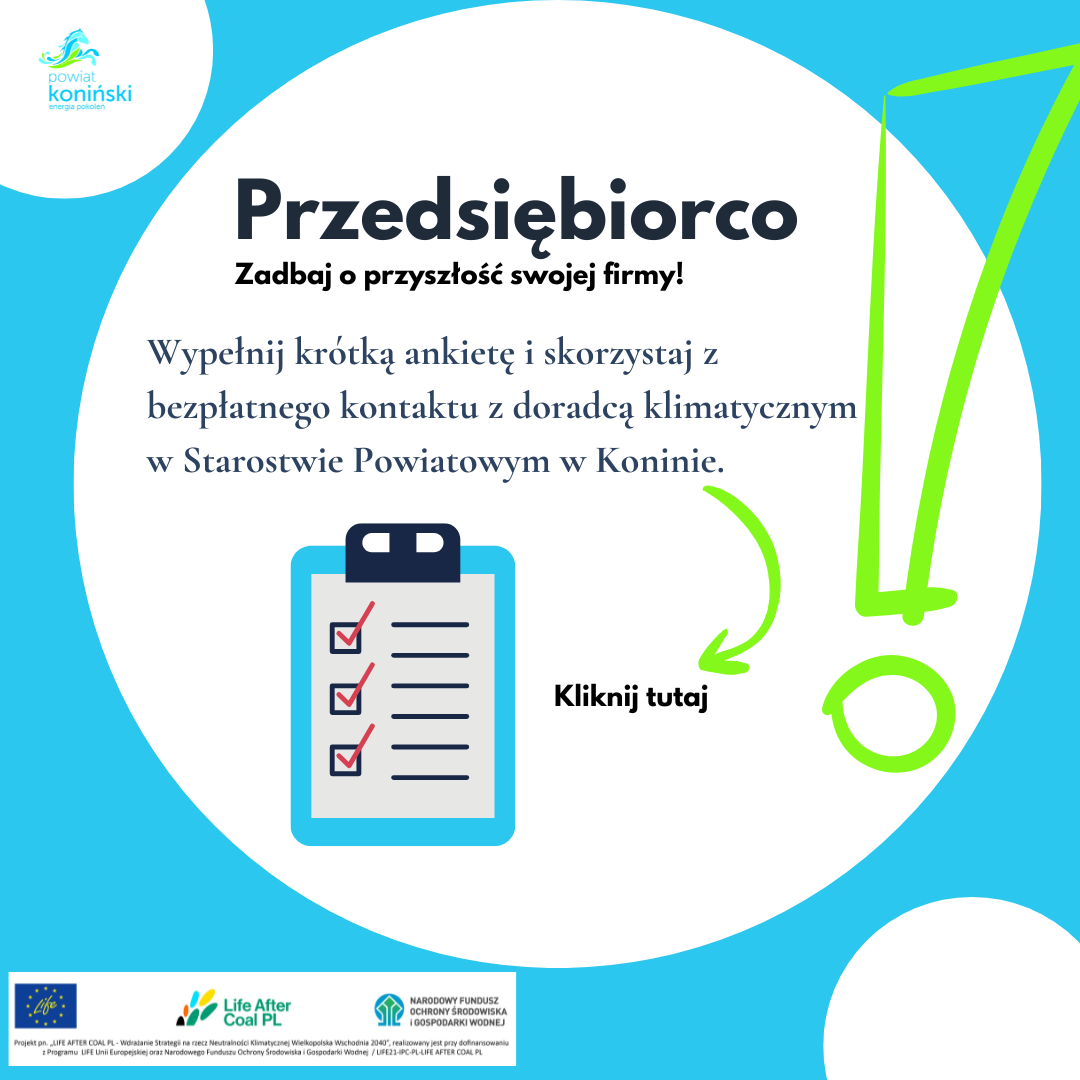 The cult of the Five Martyr Brothers developed primarily in Kazimierz Biskupi and from there spread beyond the region. Traces of the cult can be found in many places across Poland and Europe.
The cult of the Five Martyr Brothers developed primarily in Kazimierz Biskupi and from there spread beyond the region. Traces of the cult can be found in many places across Poland and Europe.
The brothers arrived in Poland during the reign of Prince Bolesław Chrobry, around 1001 or 1002. John and Benedict were Benedictines from the circles close to St. Romuald of Pereum. They were joined by three Slavs: Matthew, Isaac, and their servant Cristin. It is likely that they were accompanied by Barnabas, who is unfortunately only briefly mentioned in existing sources, but according to legend, survived the night of November 10, 1003.
The relics of the murdered hermits, who had been unable to fulfill their mission among the Slavs, were first taken to Ascoli (Italy) and later to Gniezno after 1008. In 1038, Duke Brzetyslav of Bohemia took the relics to Prague as war spoils.
The remains—specifically those of St. Cristin—eventually made their way to Stara Bolesław, Benedict’s abbey in Sazawa, and the cathedral in Olomouc (Czech Republic). It is likely that some relics returned to Poland at the beginning of the 12th century, while some fragments were transferred to Zwiefalten (Germany). By the end of the 12th century, the cult had spread to the Cistercian abbey in Ląd upon the Warta River, located near Kazimierz Biskupi. In the early 16th century, Poznań bishop Jan Lubrański received papal consent to move the relics from the Czech Republic to Kazimierz Biskupi. However, he fell ill and died during the journey, meaning the relics did not reach Kazimierz until 1525, where they were placed in the St. John the Baptist and Five Martyr Brothers Bernardine church.
 Our journey through the trail of the Five Martyr Brothers begins at the oldest site in Kazimierz Biskupi—the St. Martin Church. This church was built at the turn of the 12th and 13th centuries. Tradition holds that the church was constructed on the site of St. Matthew’s hermitage, which is also believed to be his grave.
Our journey through the trail of the Five Martyr Brothers begins at the oldest site in Kazimierz Biskupi—the St. Martin Church. This church was built at the turn of the 12th and 13th centuries. Tradition holds that the church was constructed on the site of St. Matthew’s hermitage, which is also believed to be his grave.
A distinctive feature of the church is the external stone ashlars and the stonework markings on them. The origin of these marks is unclear, but local tradition connects them to the Five Martyr Brothers, with one of the marks said to resemble the coat of arms of the Benedictines from the circle of St. Romuald. The sign near the church entrance is likely related to the church's consecration.
St. Martin’s Church was rebuilt three times: first in the early 16th century by Jan and Mikołaj Lubrański, former owners of Kazimierz Biskupi; again in the 18th century after a fire, which destroyed many Romanesque and Gothic elements of the building; and during restoration work between 1970 and 1971, when remains of a Romanesque portal were uncovered in the southern wall. The various reconstructions can still be seen on the exterior walls. Locals believed that the fieldstones in the walls came from the chapel built by the Martyrs themselves, and after each reconstruction, these stones were carefully placed back into the walls.
From St. Martin’s Church, our route leads to the wooden St. Isaac Church, located in the parish cemetery. This church was first mentioned in the mid-15th century, and its current structure dates back to 1783. Since the late 19th century, it has been used as a cemetery chapel. Inside, the altar features a painting of St. Isaac, though the original altar has been lost.
Along Łosośka Street, which leads back to the center of Kazimierz, there once stood a chapel, after which the street is named. The chapel was demolished by Nazi occupiers during World War II. A legend surrounds the chapel, telling of a salmon that is reborn in the well day after day (as "łosoś" means "salmon" in Polish). This fish is said to have been the Martyrs’ daily food.
The next stage of our trek takes us to the former Bernardine monastery on Klasztorna Street, which is now the seat of the Holy Family Missionaries. According to local tradition, the monastery was built on the site of St. John’s hermitage and chapel, where the Brothers would gather for common prayers. The monastery was founded by Poznań bishop Jan Lubrański, who, along with his brother Mikołaj Gardzina, the Poznań Voivode, had purchased the Kazimierz estate from the Lubuski bishop, Teodoryk. Construction began in 1513.
No journey along the trail of the Five Martyr Brothers would be complete without a visit to the Camaldolese monastery in Bieniszew. It can be reached via the black hiking trail that starts near Klasztorna Street. The trail passes through the Bieniszew Forest, which is home to nature monuments, reserves, and educational paths. Alternatively, you can reach Bieniszew by car—just drive in the direction of Konin, and after about 1.5 km, turn right onto the signposted forest road.
The connection between the Camaldolese monastery and the Five Martyr Brothers is clear. After the Benedictine Order underwent reform under St. Romuald, the new hermitic rules he introduced, along with the white robes of the monks, are still in use today. The name of the order (Ordo Camaldulenses) comes from the first hermitage in Campo di Maldoli, Italy (Eremo di Camaldoli).
There were once many more places in the region associated with the cult of the Five Martyr Brothers. Even in 1791, there was the St. Cristin Chapel, likely erected in the early 14th century near Kazimierz Biskupi in the new town of Krystynowo. Near Kurzyniec Lake, on the old road from Kazimierz to Kleczew, stood the St. Benedict Chapel, which was demolished in the early 18th century. The Bieniszew Forest was also the site of the St. Barnabas Chapel, which later became part of the Kamedolese monastery, incorporated by the late 17th century.
These sites, with their rich history and tradition, have for centuries linked the Konin region to Poland and Europe. The cult of the Five Martyr Brothers in Kazimierz Biskupi and its surrounding areas spread its influence throughout Europe and Poland. Attempts were made to establish the cult in Budzisław, Chwałków Kościelny, Obra, Pobiedziska (Greater Poland), Miszewo Murowane, Rokitno, Lewiczyn (Mazovia), as well as in Podlasie, Kujawy, the Lubusz region, and many other places.
Prepared by Jerzy Łojko, Mariusz Lweandowski













